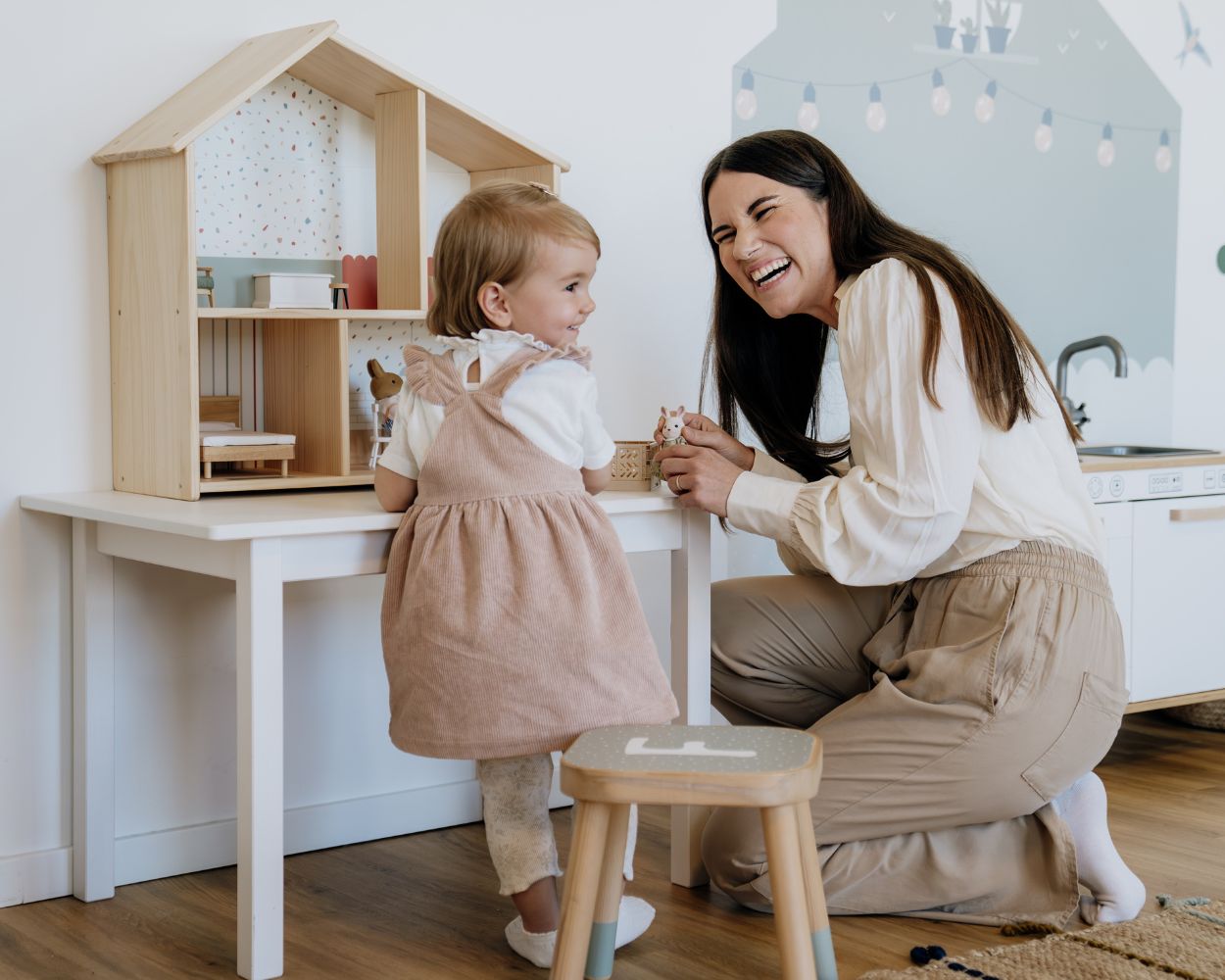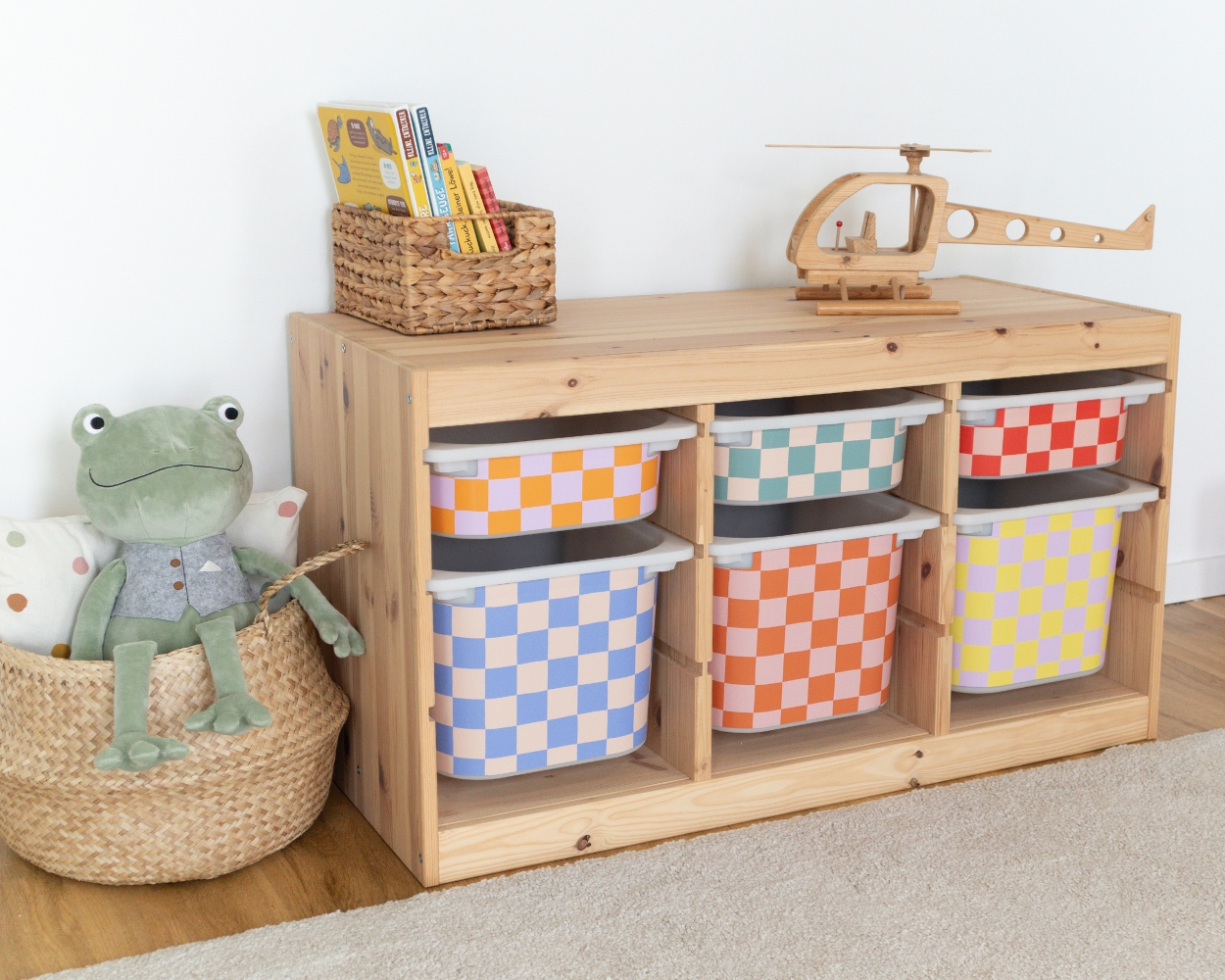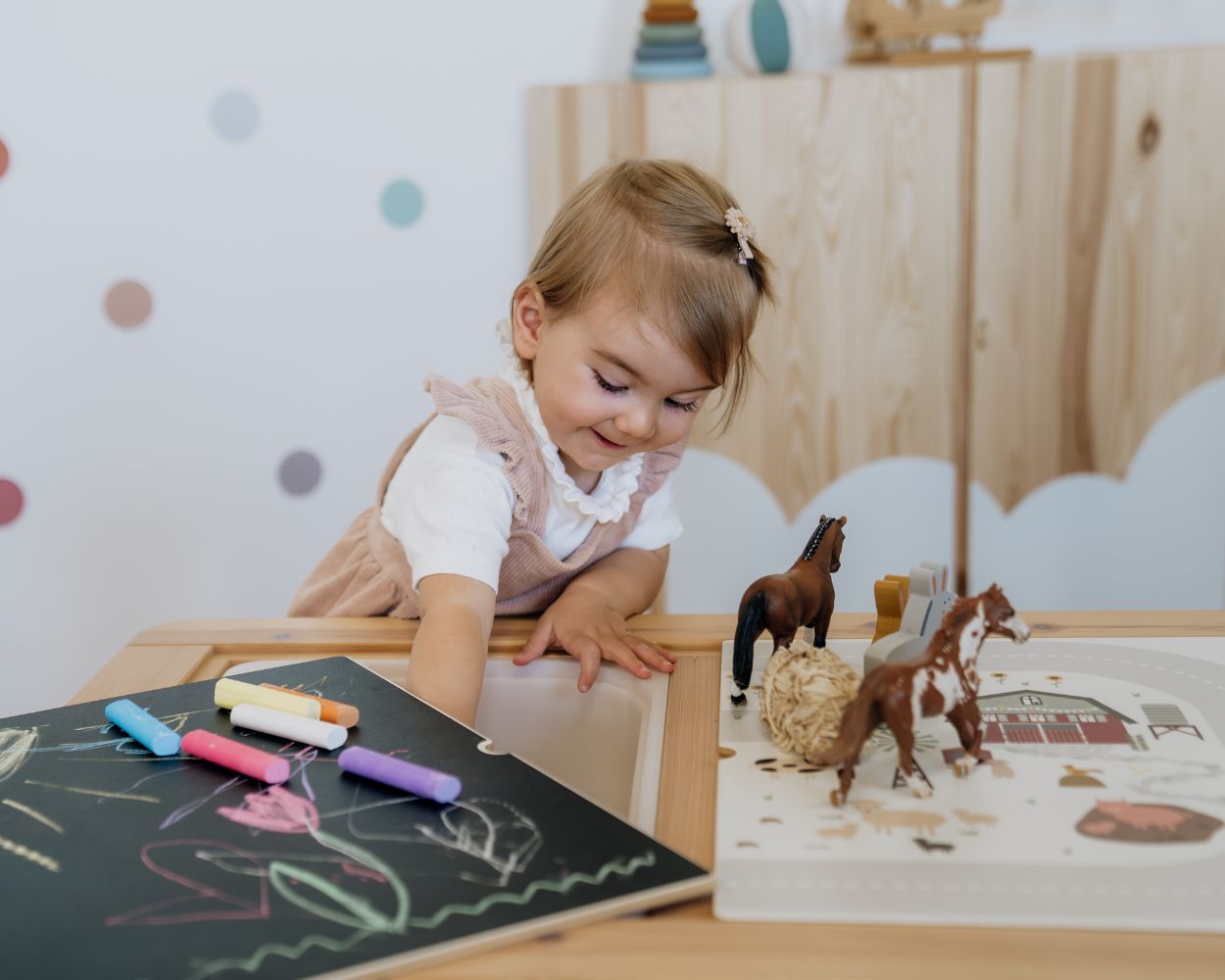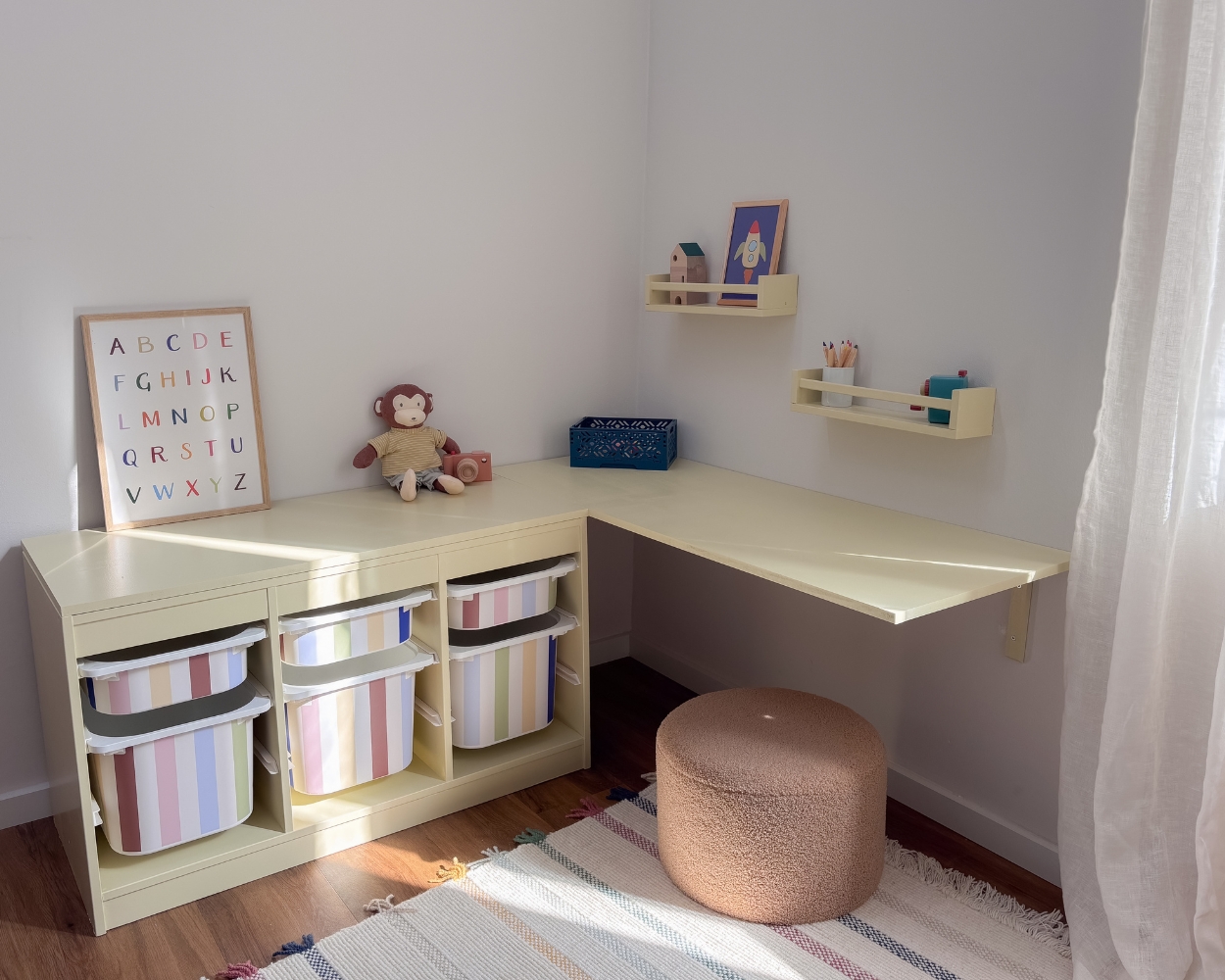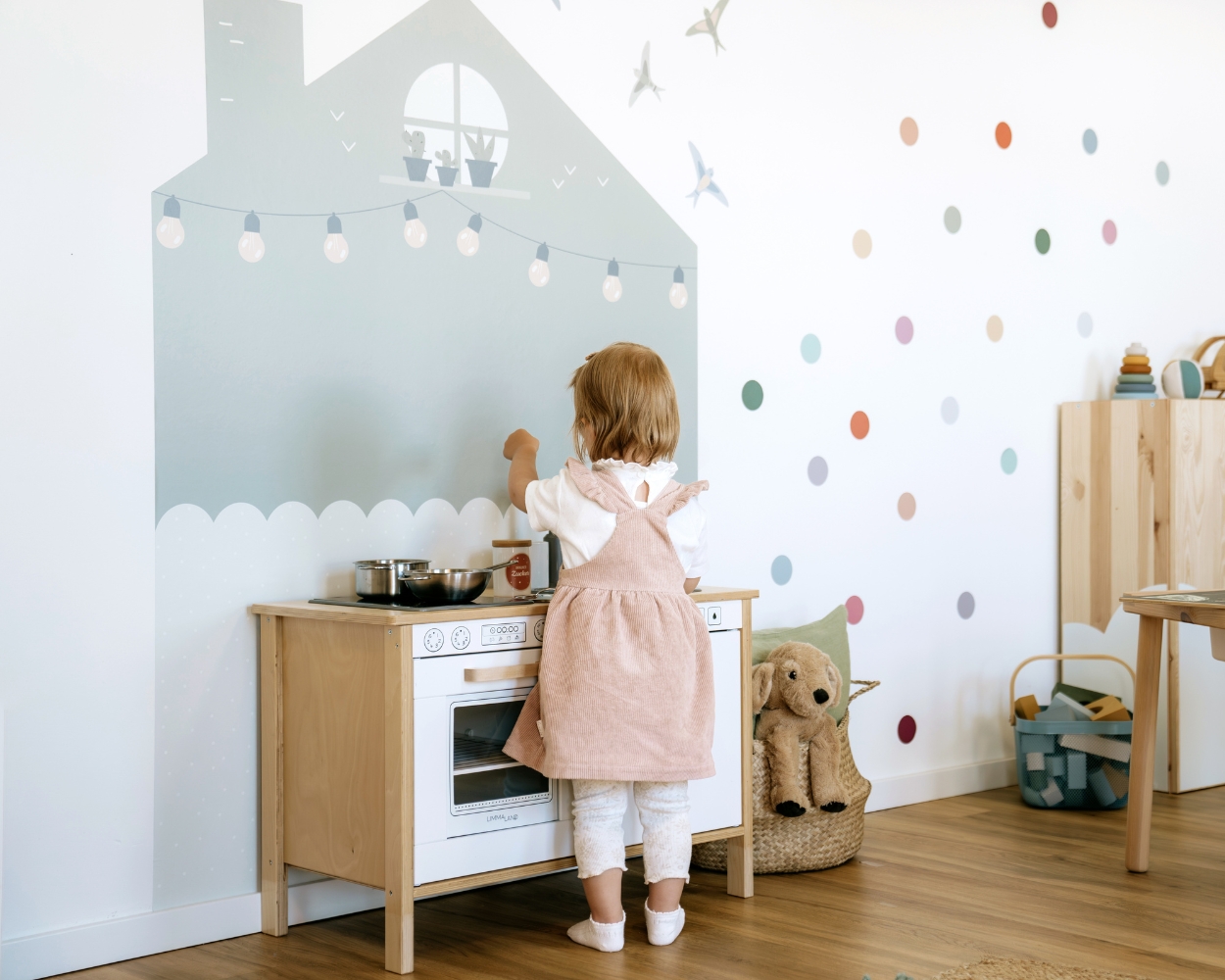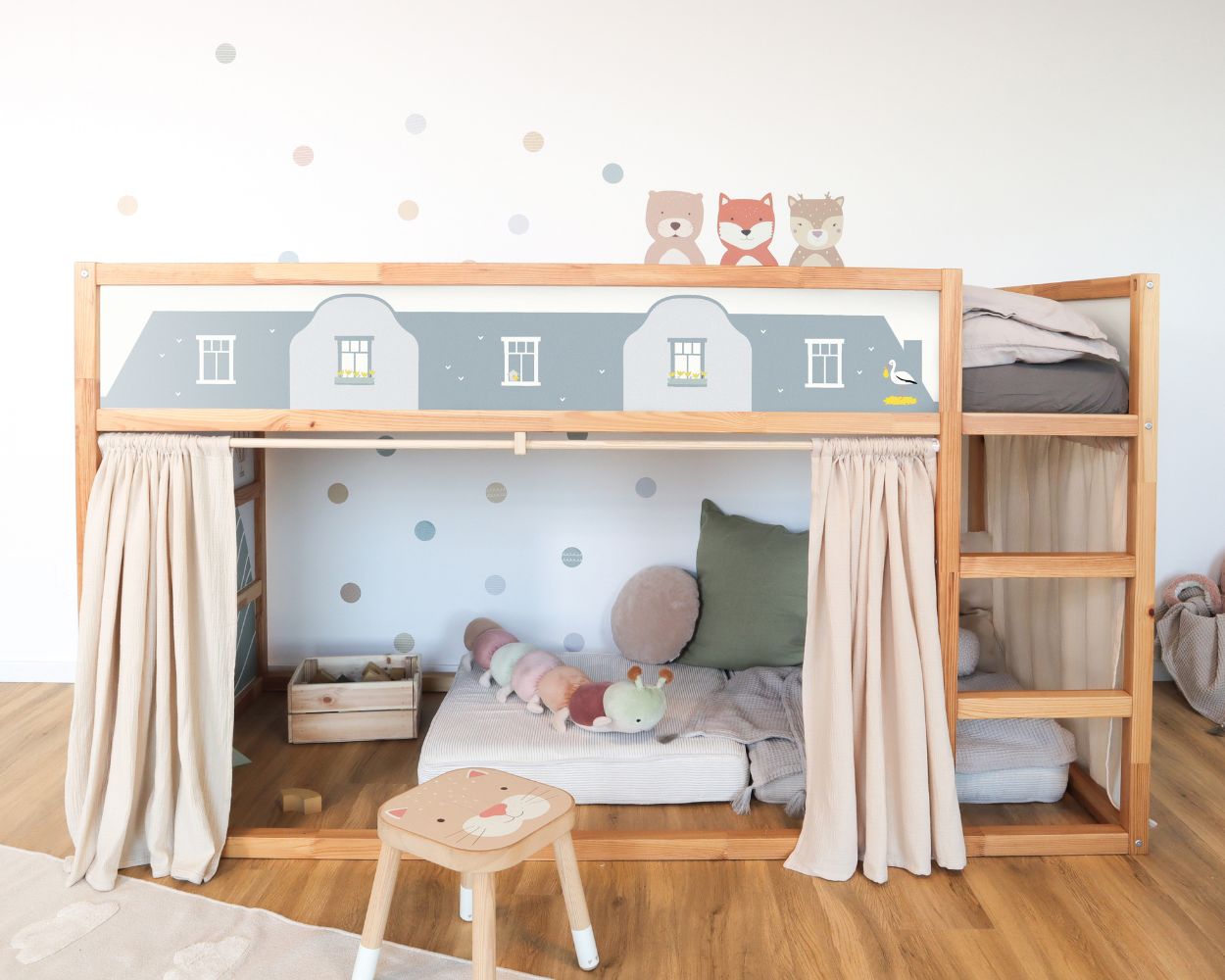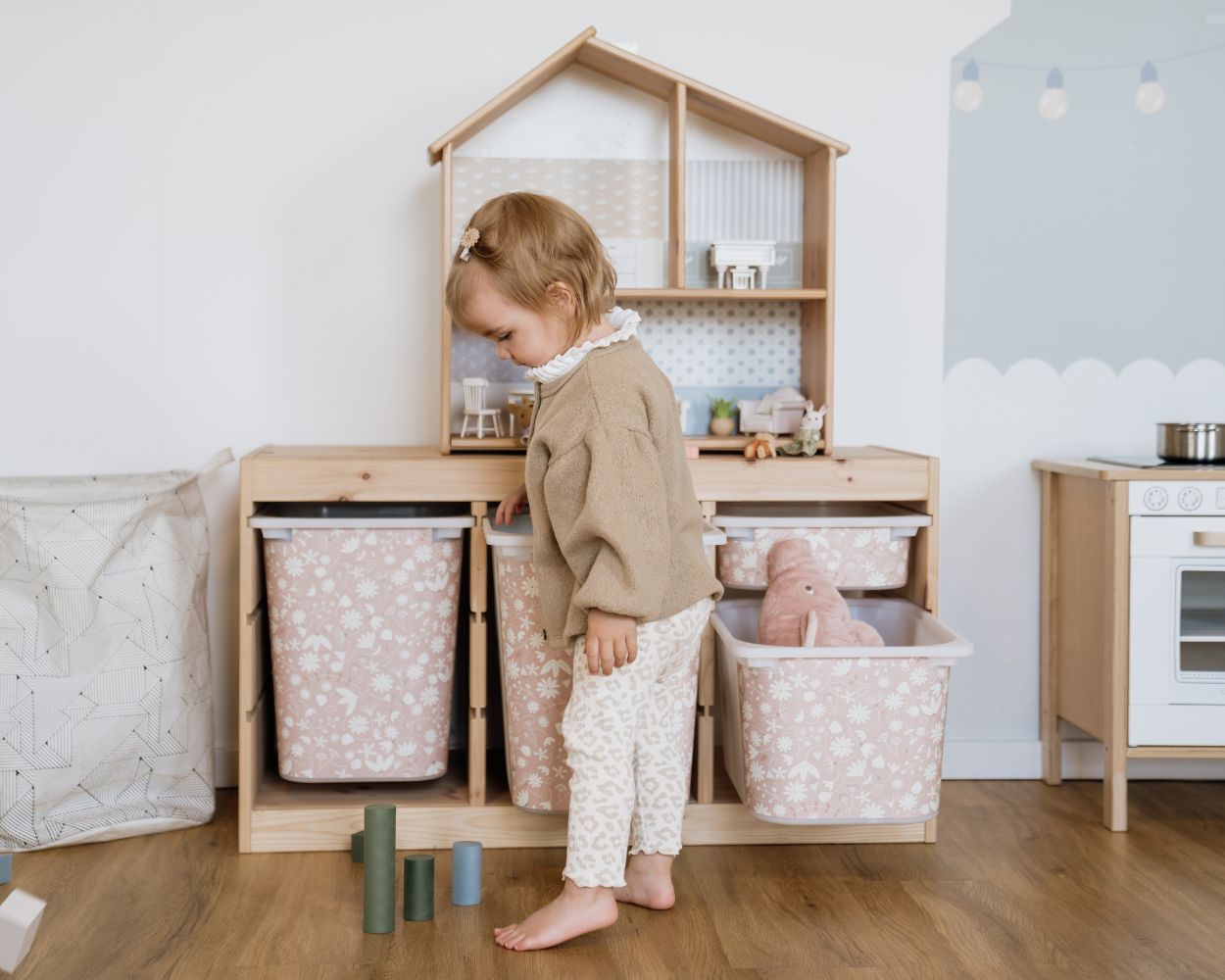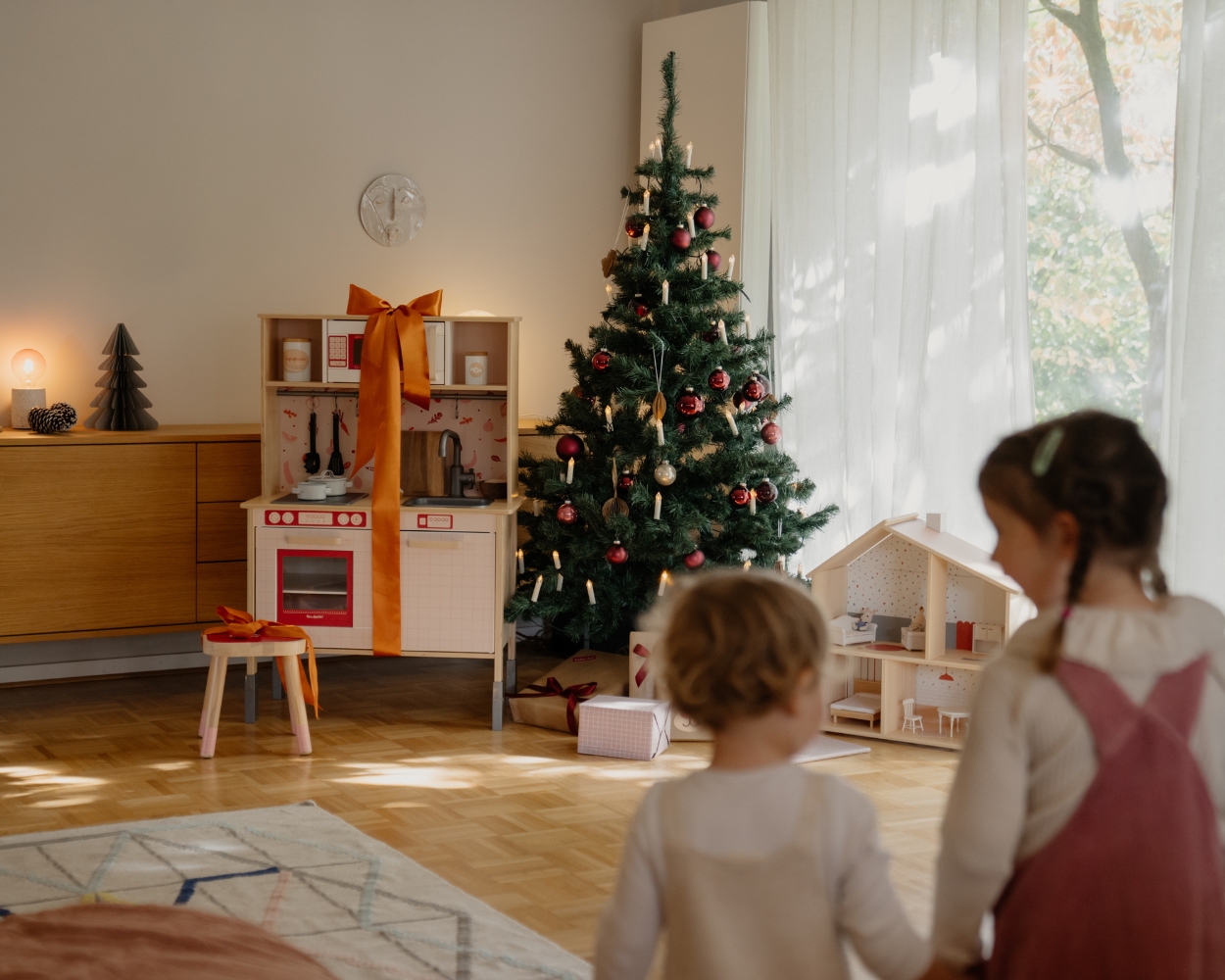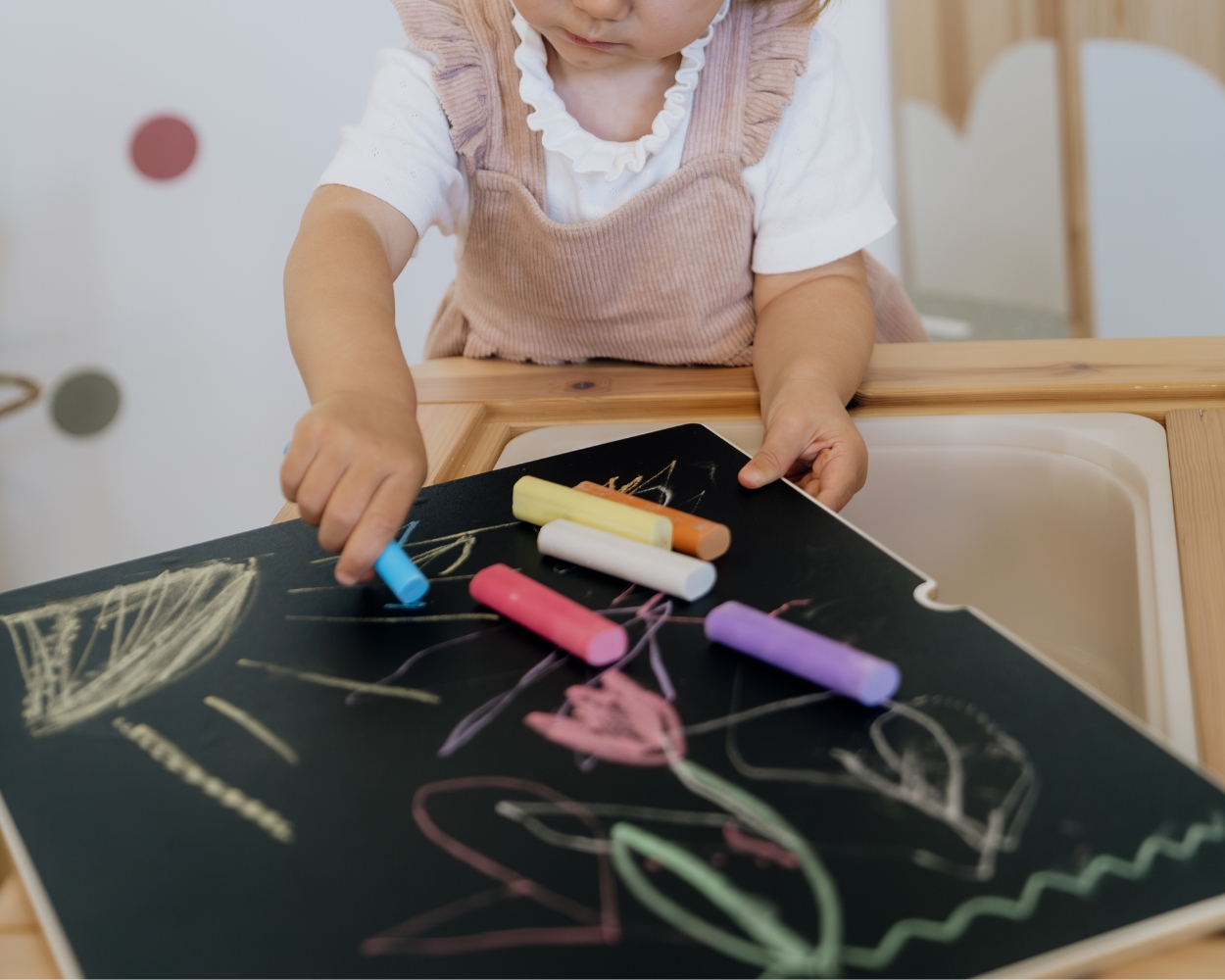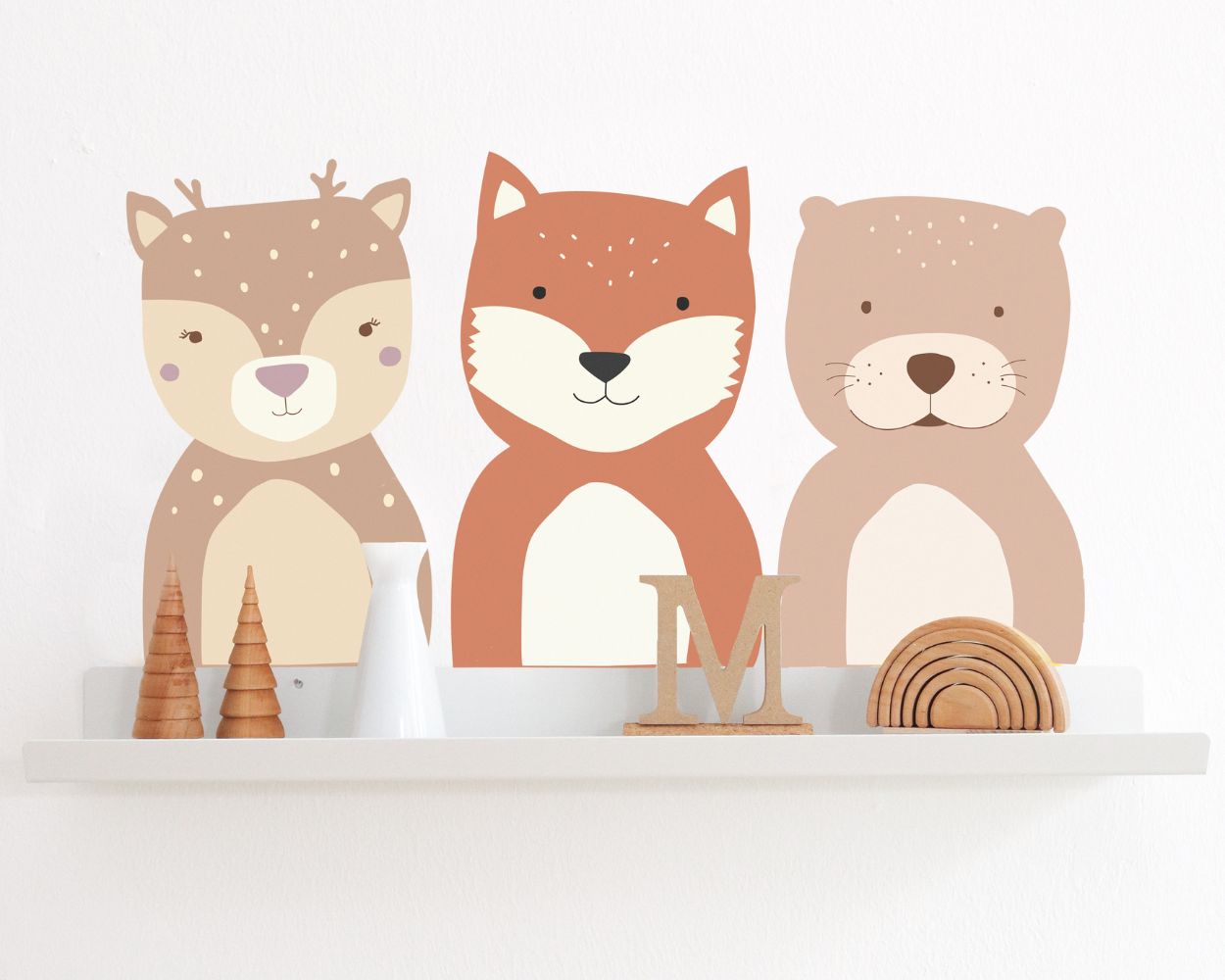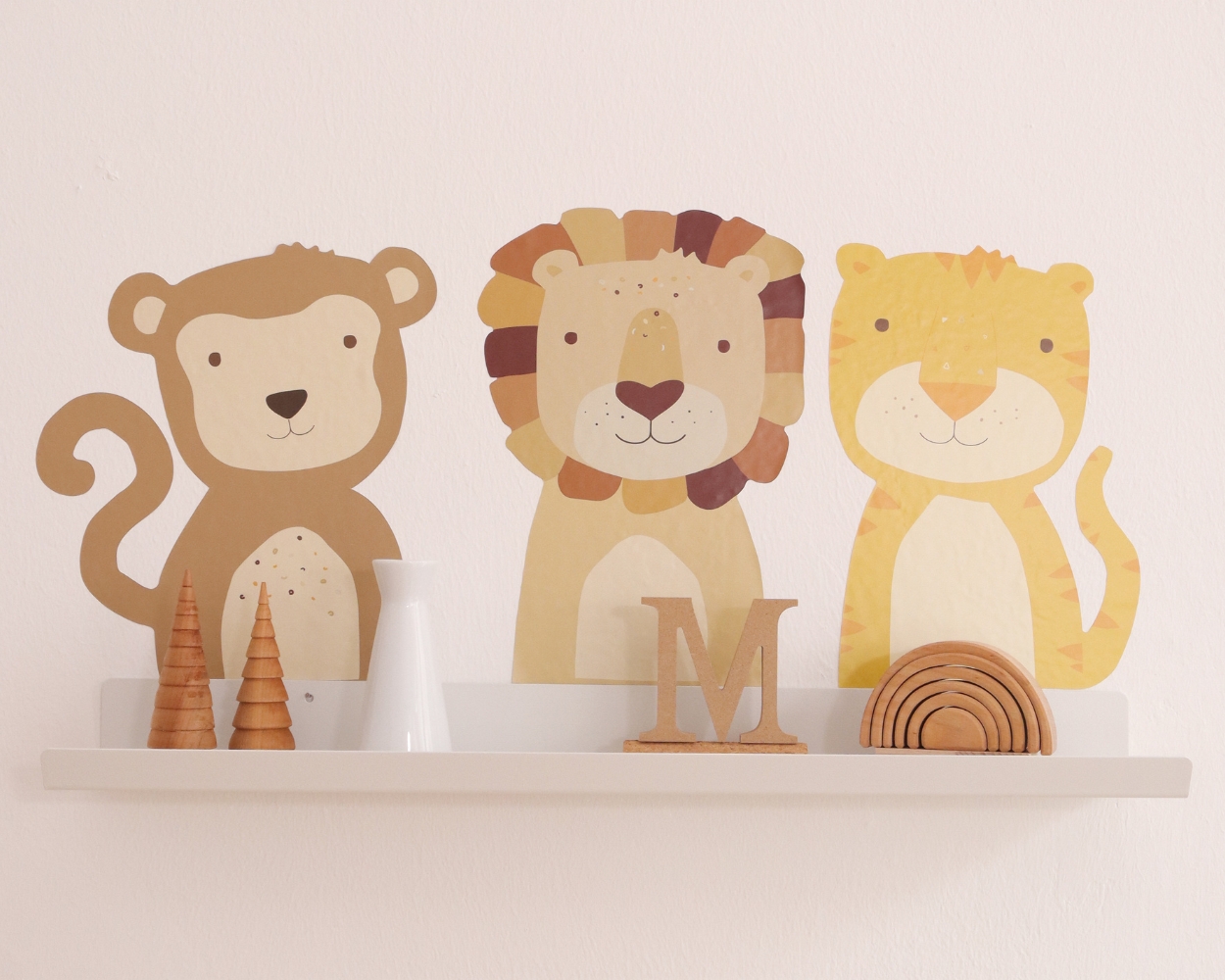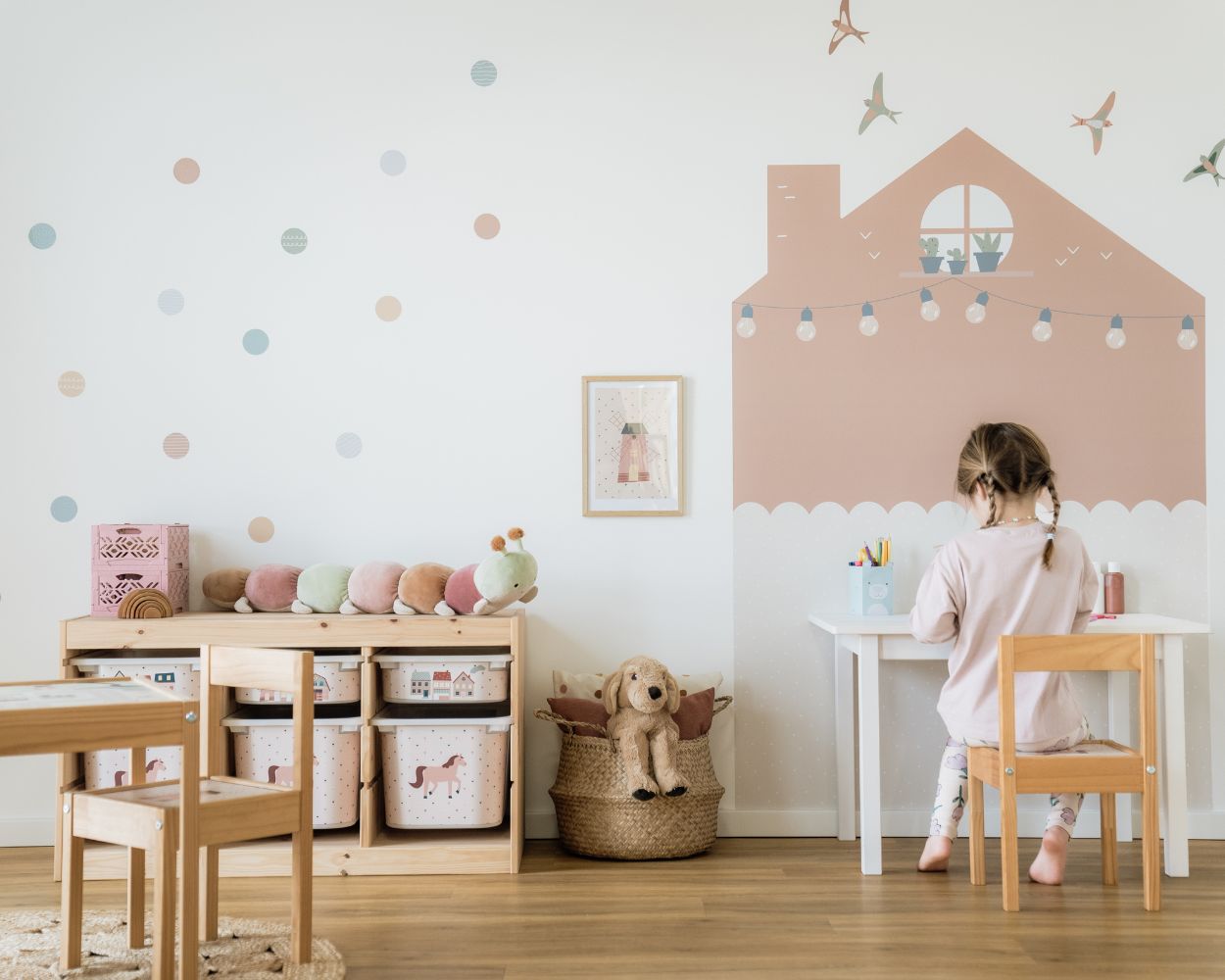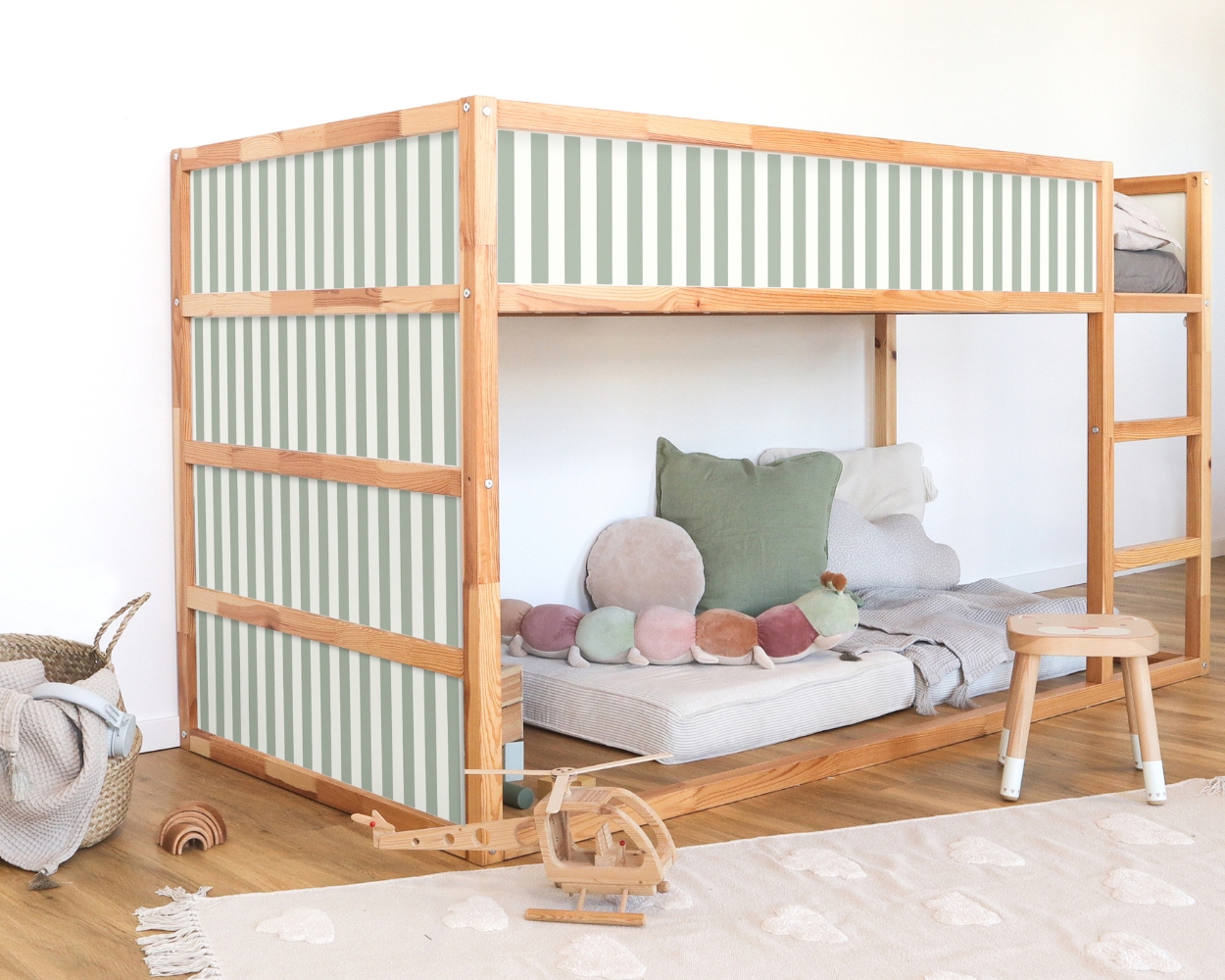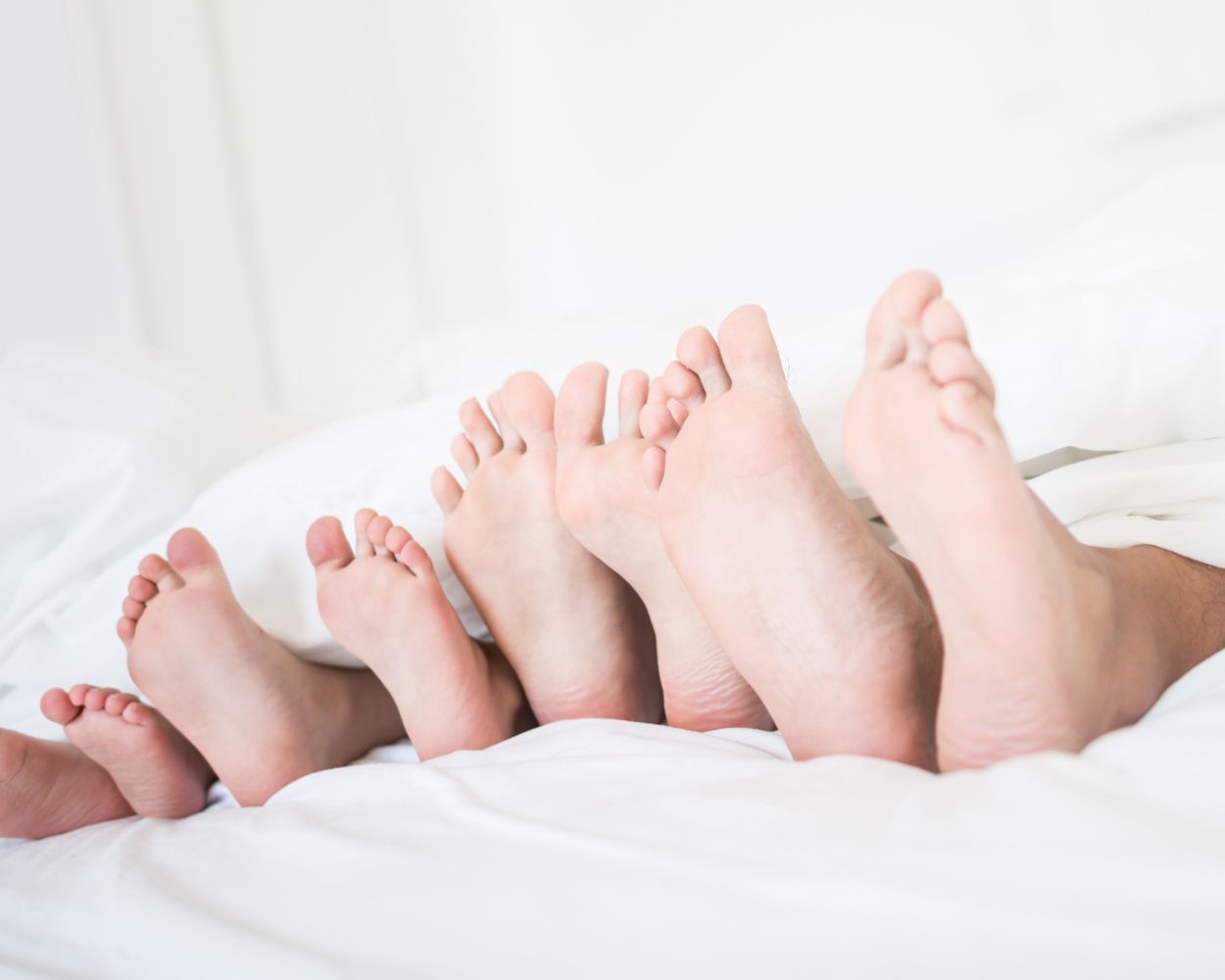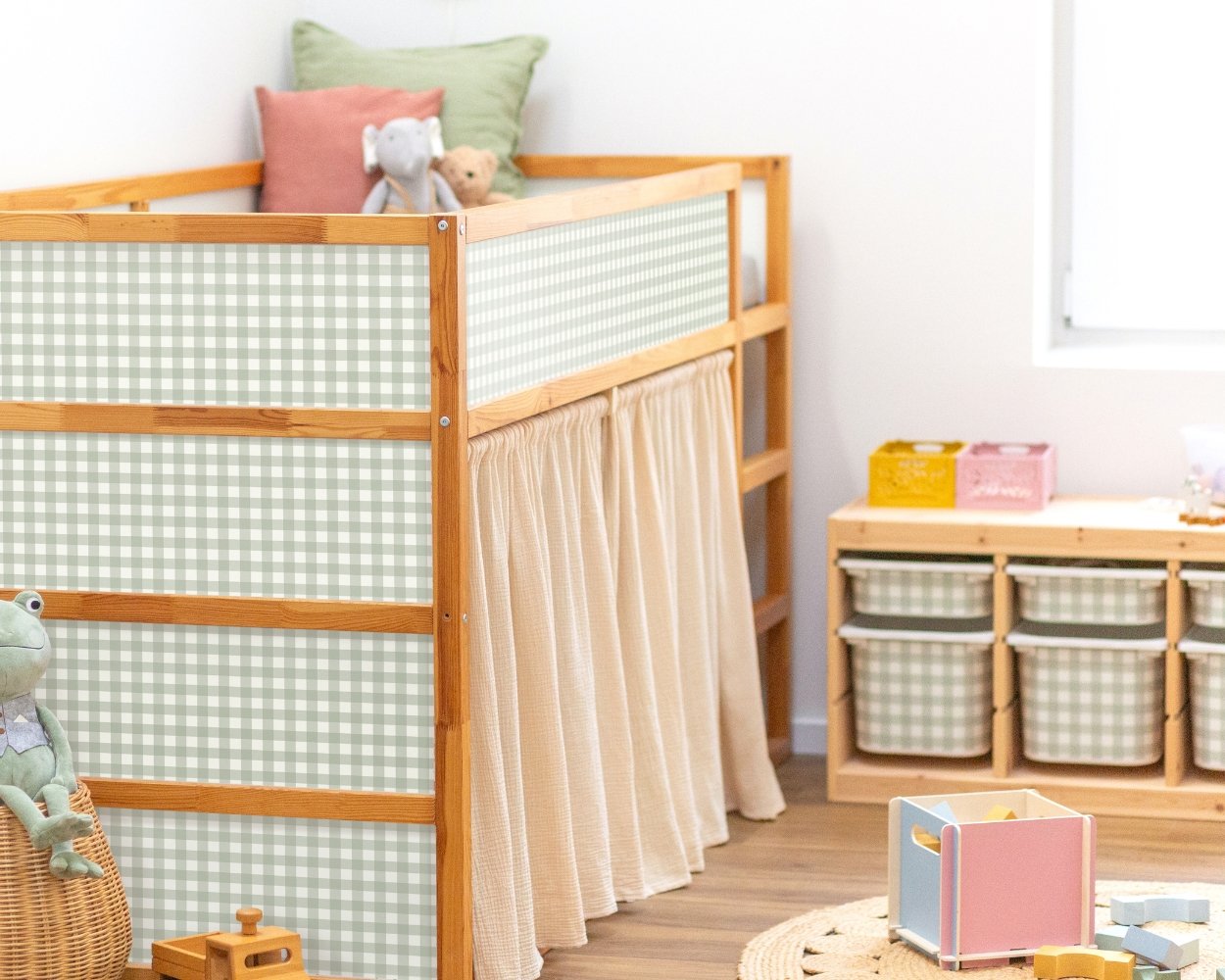
Safe Sleep in the Kids’ Room – Tips & Smart Ideas
Sleeping safely in the nursery: tips, ideas & solutions
Sleeping well means sleeping safely - and this is especially true for little explorers. The nursery is a playground, retreat and dreamland all in one. There are a few things to consider to ensure that your child not only sleeps comfortably but also safely. From fall-out protection on the bed to non-toxic materials and sources of danger in the room - here you will find the most important tips on how to combine safety and a cosy atmosphere.
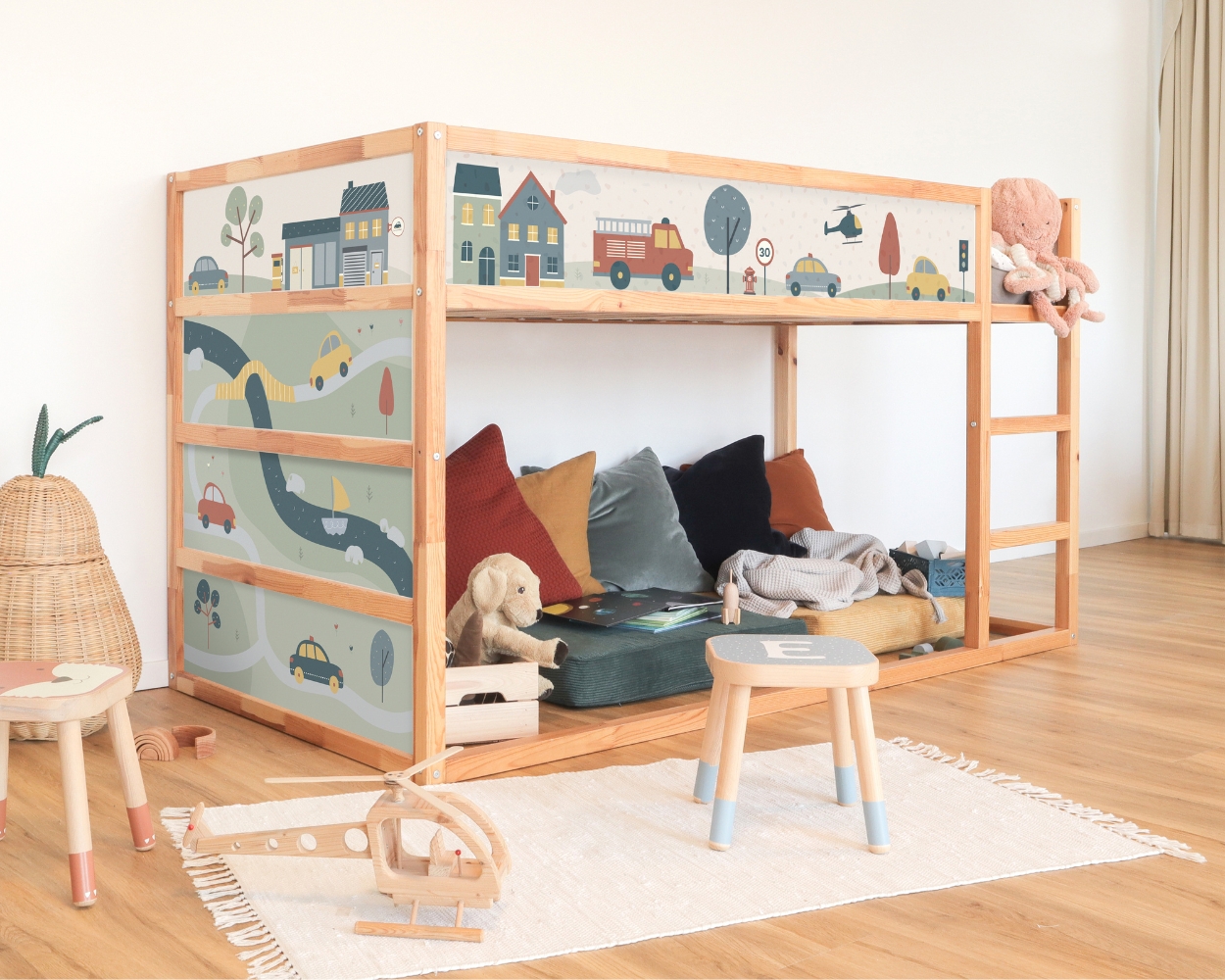
Fall-out protection for cots
Moving from a cot with a rail to the first "big" bed is a big step - for children and parents. But with this new freedom comes a new challenge: what if my child falls out of bed at night? Securing the edge of the bed is particularly important for half-height beds such as the IKEA KURA or classic bunk beds.
Children are often very active during sleep and are constantly changing position. While this is limited in the cot by bars or the playpen, there is no such protection in a large bed. Without protection, it can quickly happen that a child rolls to the edge and falls out. A suitable safety rail helps to significantly reduce this risk and makes the transition to the big bed smoother and safer.
Fall guard and bed rail options
- Classic bed rails: are particularly practical when transitioning from the cot. They can often be flexibly attached or even folded away.
- Integrated solutions: Custom-fit fall-out protection elements that blend in with the bed and are still safe. You can find this type of protection on the KURA bed, for example.
- Alternative floor bed: A popular solution, especially for younger children - if there is no risk of falling, there is no need for protection.
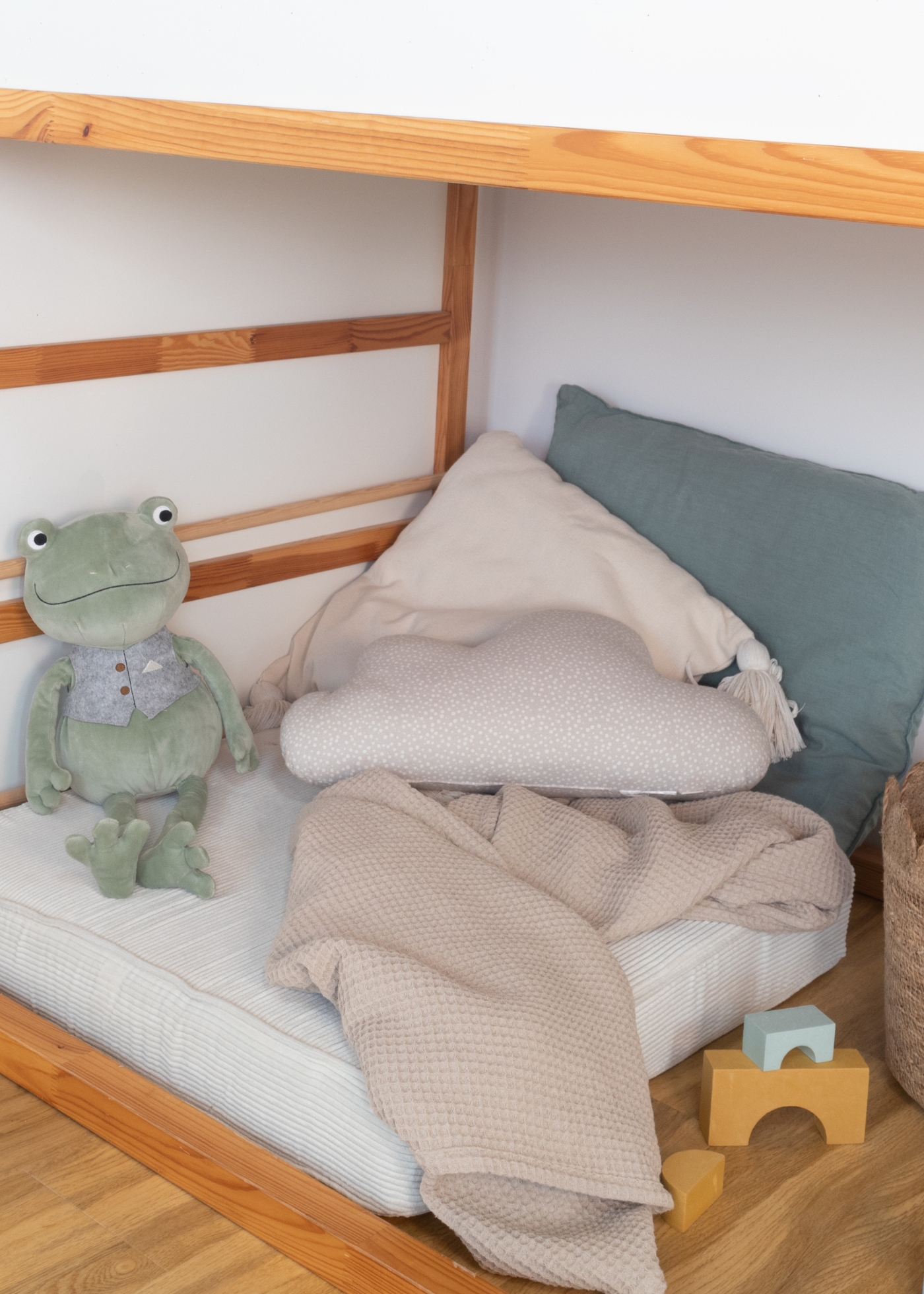
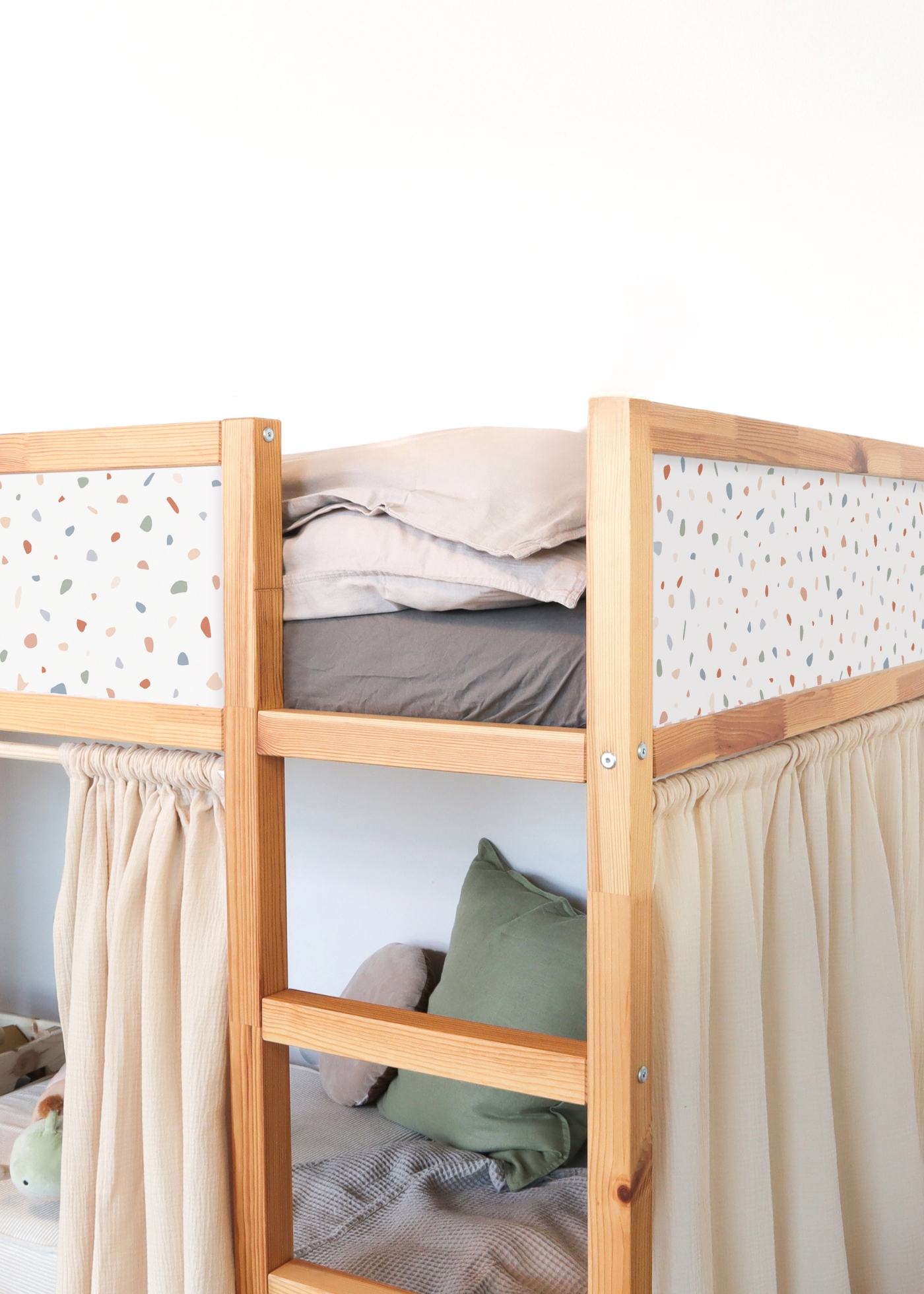
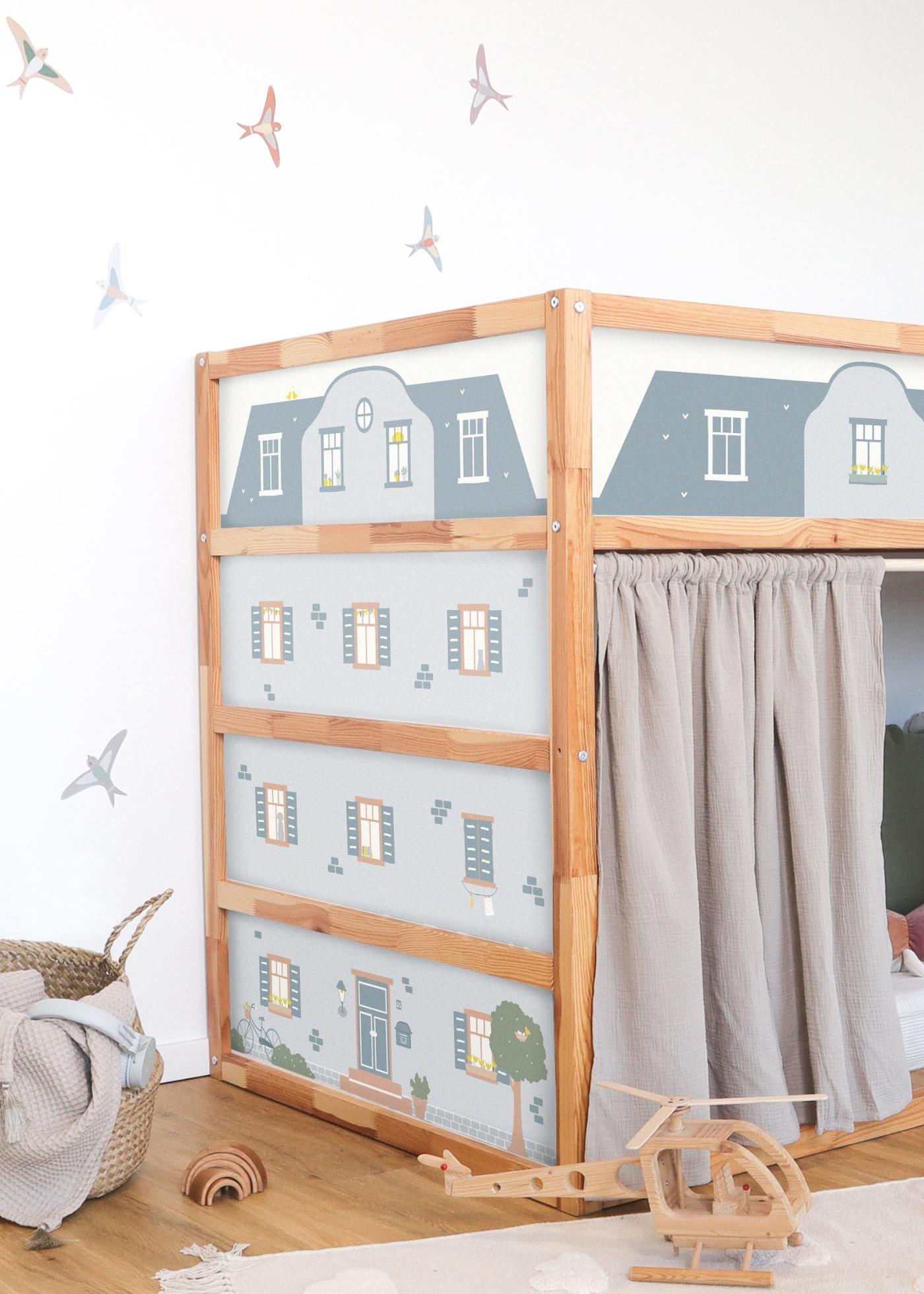
Materials for healthy sleep: non-toxic children's bed linen
Restful sleep depends not only on the right bed, but also on the right bedding. The choice of materials plays a particularly important role in children's bedrooms.
You should pay attention to this:
- Breathability: fabrics that allow air to circulate prevent heat build-up and ensure that your child doesn't sweat.
- Moisture regulation: Materials that absorb and release moisture create a dry sleeping environment.
- Seasonal adaptation: The bed linen should be pleasantly warm in winter and cool in summer.
- Soft to the touch: Choose soft fabrics such as cotton or linen.
- Easy-care: Small mishaps are part and parcel of bed linen - so covers that are easy to wash are particularly practical.
- Mattress protector: A mattress protector protects your mattress in the event of small mishaps and is therefore indispensable in the children's room. You can find mattress protectors in various sizes and materials at IKEA.
- Paints and varnishes: We show you which paints and varnishes are safe for use in the children's room and how you can easily paint furniture.
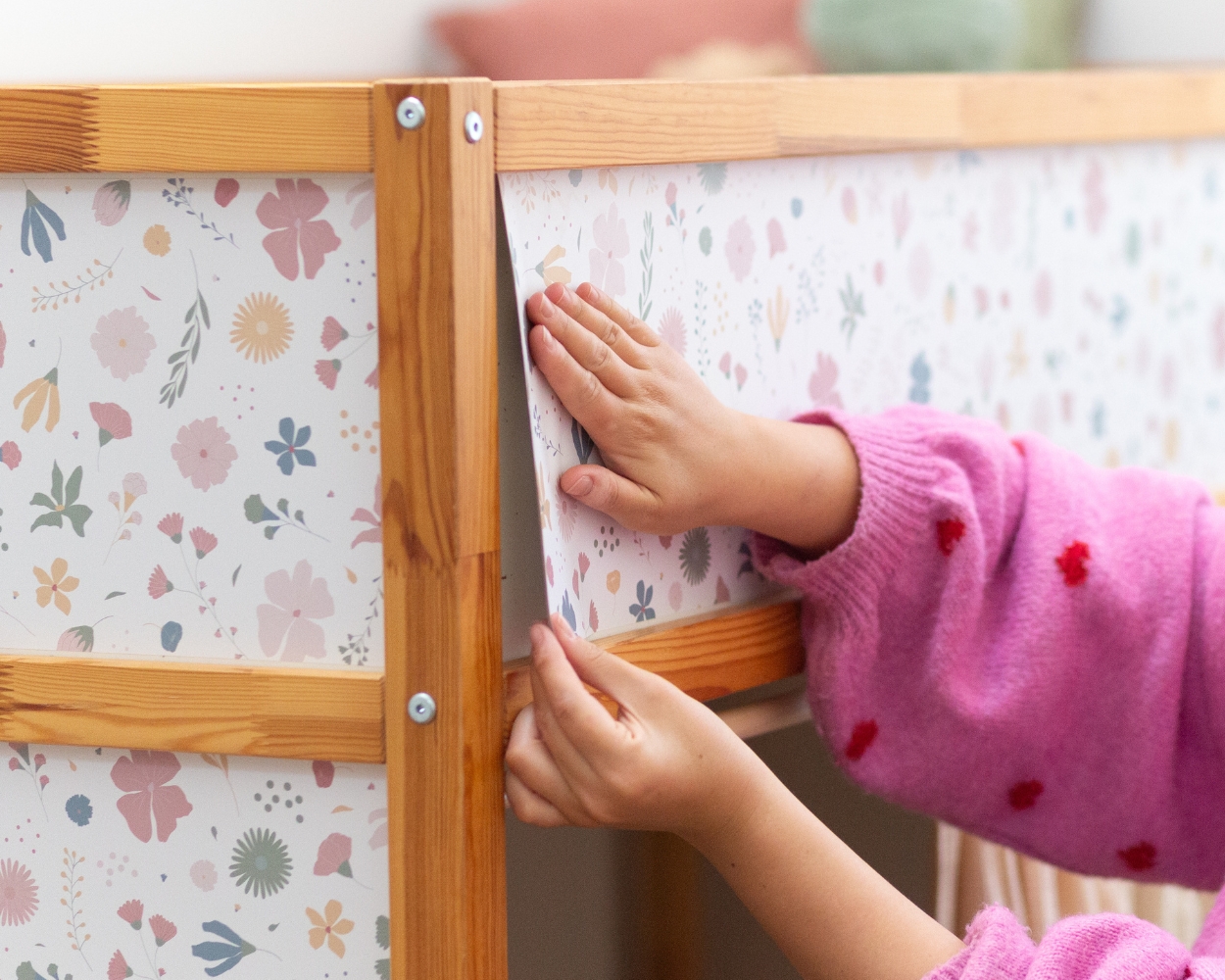
💡 Our safe adhesive films for the KURA bed
Our adhesive films for walls and furniture such as the IKEA KURA bed are CE-certified, washable and removable - so the children's room remains safe, hygienic and flexible to use. Manufactured in Germany using environmentally friendly latex printing, they help to ensure that children can play without worrying.
KURA muslin curtains: soft, airy, child-friendly
Breathable bed linen goes best with curtains made from natural fabrics. Our muslin curtains made of pure cotton feel pleasantly light and are designed to fit the IKEA KURA bed perfectly. This allows you to create a cosy snuggle or sleeping corner under the bunk bed.
Avoid sources of danger in the children's room
The children's room should also be a safe retreat at night - especially if your child sleeps alone or gets up at night, you should make the children's room safe. Loose cables, small decorative objects or sharp-edged furniture can quickly become a risk if your child is playing or romping around half asleep.
Therefore, make sure to cover power sources so that they are childproof, store small items out of reach and anchor tall pieces of furniture such as shelves firmly to the wall. Curtains, blinds or light chains should also be securely fastened and not form loops that children could get caught on. This will reduce tripping hazards, the risk of injury and frightening moments - and create a sleeping environment in which your child can dream peacefully and without worry.
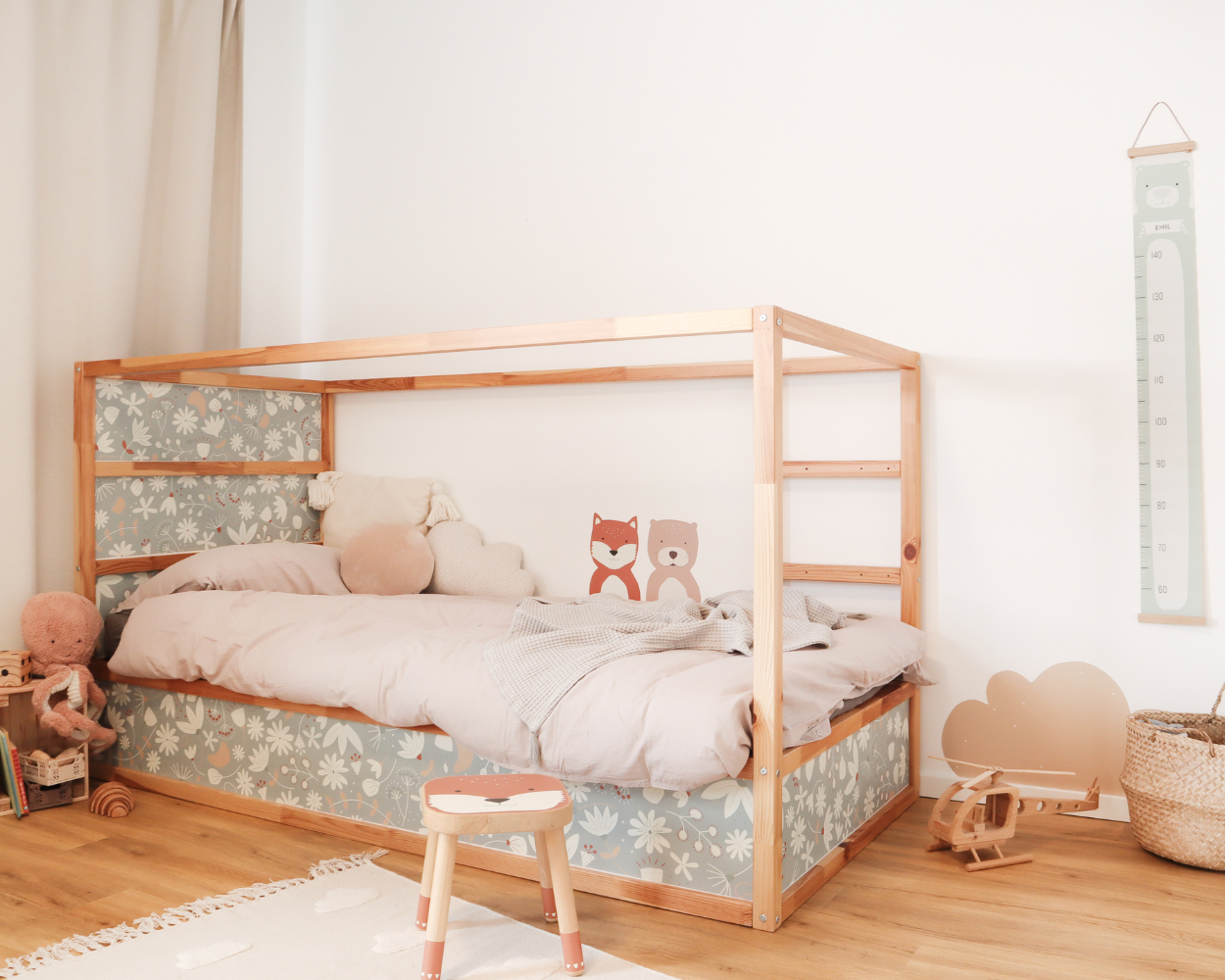
FAQs - Frequently asked questions about safe sleeping
When does my child need a safety rail?
As soon as your child moves from the cot to the junior bed or bunk bed. Usually from around 2-3 years of age. This is when the little ones are particularly mobile and move around a lot during sleep.
Is a bunk bed safe for toddlers?
A bunk bed is not recommended for children under the age of 6. A good alternative is the IKEA KURA bed, which can be used flexibly as a floor bed or half-height bed as soon as your child is old enough.
How do I prevent my child from falling out of bed?
Toddlers move around a lot when they sleep, which is why it is particularly important to have a fall-out guard for your child's bed. You can easily attach these yourself. If the risk is too great for you, your child can sleep in a floor-level bed for the time being.
Which materials are best for children's beds?
Natural materials such as real wood or non-toxic fabrics are the safest. They ensure a healthy indoor climate and minimise allergy risks. It is best to choose materials that are robust and easy to clean.
Why does a night light contribute to safety?
A soft night light helps your child to orientate themselves better at night. It prevents tripping hazards when they get up, reduces fear of the dark and makes it easier for you as a parent to check the room without waking your child.

